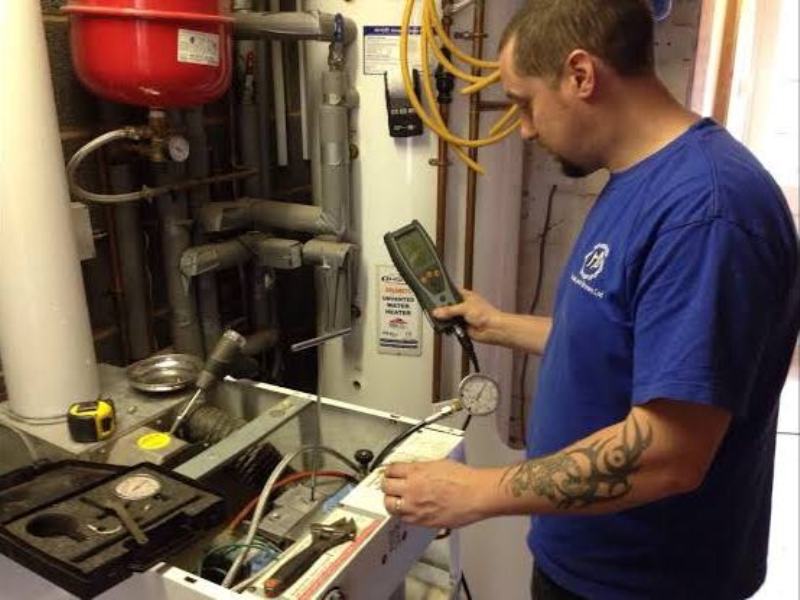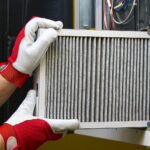The oil boiler is used remarkably in those areas where gas is not available. Or if you are unable to connect your gas mains to your heating system, oil is your savior.
Especially, an oil boiler is used to warm up the cold water or to produce steam from it. As a cold country citizen, often, you need to seek knowledge about boilers. And yes, there are a couple of great options out there to rely on. For instance, the team at https://iheat.co.uk is known for their dedication when helping customers and assessing problems the right way.
So, this article will help you to learn about how an oil boiler works and how you can compare boiler and central heating cover.
What is an oil boiler?
An oil boiler works as similar to a gas boiler. The key difference between the two systems is that an oil boiler burns oil to produce its energy whereas a gas boiler runs with gas.
You need to store the oil in an oil tanker. A pump is attached to it circulates the oil to the boiler through a well-managed fuel distribution system.
Once the boiler starts functioning, the oil starts burning in a combustion chamber. It generates heat and then the hotness warms up the cold water.
This hot water is then distributed through a radiator or heat exchanger to control the temperature of the room and the usable water.
Remember, you have to go through some oil boiler reviews over the internet before buying one.
Components of an Oil Boiler
There are five primary components of an oil boiler.
- Burner
- Combustion Chamber
- Heat Exchanger
- Oil Sources
- A Distribution Network
Operational Processes of an Oil Boiler

To set a standard temperature in a room, we usually use thermostat. It sends an electric signal to the boiler when the temperature drops below the setting, we configure.
The boiler then opens a valve and releases hot water from its tank. The water is distributed through the pipeline and reaches the radiator that causes the air to warm up.
On the other hand, the water circulation system is attached to the boiler as well. The boiler automatically makes itself functioning when the water temperature drops below a predetermined setting.
The Burner and Combustion System
The burner and combustion chamber are the main two components responsible for heating the water. The burner initially starts the combustion reaction when it receives the electric signal from the sensor.
The pump attached to the oil tank circulates the oil to the burner. The oil burner then sprays the oil into the chamber through a nozzle.
It produces heat as the combustion chamber is made of cast iron. The generated heat is transferred through a heat exchanger and circulated all over the house.
Heat Exchanger
The heat exchanger is nothing but a tightly coiled copper pipe. It covers relatively a large surface where heat is produced and warm the water up.
Then the hot water is circulated through a well-managed distribution system.
The Oil Source and its Storage
Now we are going to discuss storage systems. You need to store the oil for your boilers to be work smoothly and the hot water it produces through its processes.
The Storage of Oil
The team from BoilerJuice US notes that, “You can use a plastic or an aluminum tank to store the oil. Most of the modern oil tanks are made of plastic due to its easy maintenance.”
The base of the tank must be too strong to contain the load of its contents. You should make the surface rock solid when you use it as a tank base.
There should be an automatic shut-off valve installed in your oil tank. If any accident occurs, it will save the oil tank from fire spreading by the boiler.
The Storage of Hot Water

There should be a tank that can contain the necessary amount of hot water according to the daily requirement of your household. It might be in your underground basement or somewhere else in your property.
The Distribution System
Pumps are quite useful and widely used to circulate the hot water all over the house. It can blow the water back to the heating boiler for recycling.
There is a temperature sensor in the boiler that tells it to start working when the temperature falls below the setting. The burner starts functioning when an electric signal is sent to it by the sensor.
Still afraid of an oil boiler!
An oil boiler works efficiently to provide you with warm water. The basic functionality of an oil boiler is not so easy to understand. There is no sufficient document available on the internet that may help you to get proper knowledge of oil boilers.
We hope you have got a clear idea about how an oil boiler works and its different parts in this article. Hopefully, it will help you to buy your next heating system.






